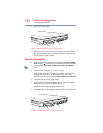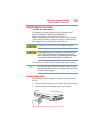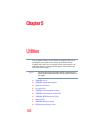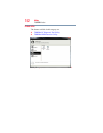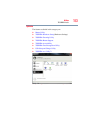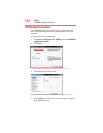
147
Exploring Your Computer’s Features
Using the eSATA/USB combo port
Using the eSATA/USB combo port
(Available on certain models.)
Your computer includes an eSATA/USB combo port, which can be
used with both eSATA (external Serial Advanced Technology
Attachment) devices and USB devices. The eSATA interface
supports fast data transfer rates, which is especially useful for
transferring and storing large files such as digital photo, music or
video files. Like the USB interface, the eSATA interface supports
hot swapping (connecting and disconnecting devices while the
computer is on). eSATA devices require an external power source.
Your eSATA interface supports USB Sleep and Charge. For more
information about USB Sleep and Charge, please see “USB Sleep and
Charge Utility” on page 165.
Using the Ambient Light Sensor (ALS)
The Ambient Light Sensor (ALS) can sense light levels in the area
of your computer and automatically adjust the brightness of the
built-in-display, in order to improve screen visibility in low-light
and high-light conditions
The ALS is enabled by default, but is automatically disabled when
you are using the TOSHIBA eco Utility™.
To enable or disable the ALS function, click Start, Control Panel,
Hardware and Sound, and then Location and Other Sensors.
Do not cover the ALS as the sensor will automatically adjust the
computer's built-in-display’s brightness to low-light conditions.
The ALS controls your computer's built-in-display's brightness. It
does not control the brightness of external display devices.
NOTE
NOTE








